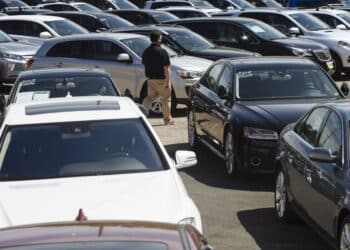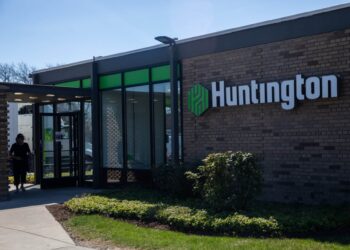5 Ways Mobility Will Change the Secondary Market

New ownership and mobility models are popping up all over the auto finance space and that’s driving new innovations in the auto ABS market as well.
As more and more consumers switch to fleet-focused mobility offerings, it’s forcing investors and issuers to think differently about the assets they are securitizing. For example, some believe issuers will switch to traditional forms of fleet ABS, while others are looking at quantitative metrics for the utilization potential for specific vehicles in the fleet, analysts and executives told AFN.
However, there are many other innovations to come in the interim including electric vehicle securitizations, used leasing, and contending with the increased cost of ownership that is pushing riskier loans.
Here are five ways mobility is changing the secondary market:

1. Tesla’s First Lease Issuance
Earlier this year, the much-hyped electric car manufacturer Tesla Inc. issued its first lease securitization backed by $608 million worth of leases originated by the OEM’s finance arm.
It’s a big step for the company that is looking for additional funding amid production issues with its more-affordable sedan, the Tesla Model 3. However, there are big concerns about the residual values of the underlying assets, according to a Moody’s Investors Service pre-sale report.
Moody’s forecasts a 35% total loss in value of the collateral, primarily driven by uncertain resale values. Tesla only has data on 4,344 used Model S and Model X vehicles.
“Battery electric vehicles (BEVs) have higher residual value uncertainty than internal combustion engine (ICE) vehicles, because of the lower predictability … as a result of range anxiety and technology advancements,” according to the report. “These factors could affect the residual values of the BEVs more dramatically in the short run.”
On the other hand, investors flocked to the issuance due, in part, to the ambitions of the brand and its position in the future of electric vehicles.
“There’s an upside, if you believe in electric vehicles as the immediate next step in the future of autos, on our way to fully autonomous cars,” Joseph Cioffi, chair of the Insolvency, Creditors’ Rights & Financial Products Practice Group at Davis & Gilbert, told AFN. “If you do, all those EV-specific risks won’t matter so much, and you’d focus on the fundamentals — credit quality, credit enhancements, and coupon.”

2. Other EV Securitizers
Although Tesla is the first to securitize a pool entirely made up of BEVs, it isn’t the first to ever securitize those assets.
“Manufacturers such as Ford and Nissan have already included electric vehicles, hybrids, and plug-in hybrids in securitizations together with internal combustion models, but they’ve made up a small portion of the pool,” Cioffi said. “While the economy is strong, investors seem eager to tap new markets, making future EV deals an aspirational pursuit, but still, other manufacturers have some ways to go to reach the volume, product range, and allure Tesla has achieved.”
New affordable long-range BEVs are entering the market to compete with Tesla and those like-minded vehicles could make their way to the ABS market.
3. Switching to a Utilization Model

As expensive autonomous technology gets out of reach for the average consumer, manufacturers and banks are going to turn more toward fleet financing, Robert McDonald, vice president of structured finance in the investment banking division of Goldman Sachs, said at the 2017 Auto Finance Summit.
“You can see a model where you try and lend against the asset value, but the residual value for autonomous vehicles is going to be tough to understand and calculate,” McDonald said. “You can see it morph into lending against cash flow — less so the asset.”
Since multiple people will be sharing the same car in this autonomous future, values will have to be derived from how much revenue each vehicle in the fleet is generating, he added. That kind of model could wind up being more predictable than the status quo.
“You’ll see how much revenue is being generated off those vehicles,” McDonald said. “As you move more into autonomous vehicles, you’ll move into relatively predictable cash flows, at that point compared to the actual value of the underlying asset.”
 4. DBRS Focuses on Fleet Management
4. DBRS Focuses on Fleet Management
Fleet lease volume on the secondary market increased 54% year over year to $7.6 billion in 2017, according to a February report from DBRS Inc.
That volume was driven primarily by a small cohort of rental companies including Enterprise Fleet Management Inc., the Hertz Corp., and Automotive Rentals Inc. (ARI). However, DBRS is expecting some new players to enter the fray.
“The fleet lease ABS market has historically been dominated by a select few issuers — Element Fleet Management Corp., Enterprise, ARI, Wheels Inc., and Hertz,” according to the report. “While these are five of the six largest fleet lessors by U.S. portfolio size, there is potential for smaller lessors to complete one-time ABS transactions.”
The rating agency expects fleet ABS volume to grow by 10% to 20% this year.
5. Mobility Challenges Assumptions of Ownership 
The old adage in the auto finance industry since the great recession has been, “You can sleep in your car, but you can’t drive your house to work.” Meaning, in times of economic distress, consumers will sooner pay off their car loan than their mortgage or rent.
However, affordable mobility options challenge that notion, Cioffi said on an episode of The Roadmap, a podcast from the Center for Auto Finance Excellence.
“I’m not so sure the auto loan will be the first thing borrowers will pay off,” he said. “We hear every day about the advances in technology and the expansion of ridesharing and ride-hailing services. Car ownership is not as desirable across the country as it has been in the past, there are alternatives. The writing is on the wall in that respect, it’s just a matter of time before the consumer trends catch up with the performance in the auto market, which will ripple through to auto remarketing and securitization.”
For more content like this, attend the third annual Auto Finance Innovation event, slated for March 7-8, at the Parc 55 in San Francisco. For information, or to register, visit autofinanceinnovation.com.

















